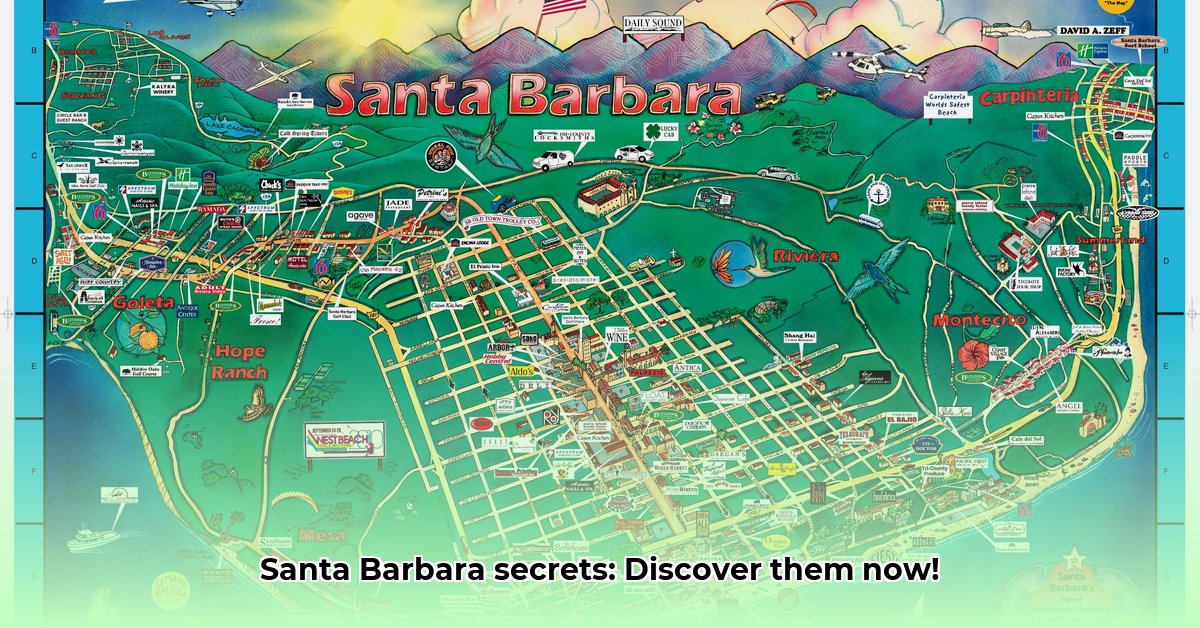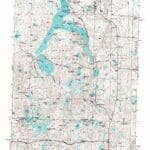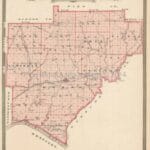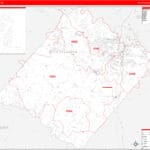Santa Barbara is a captivating city, but navigating its beauty requires more than just a casual glance at a map. This guide is your key to unlocking Santa Barbara’s hidden gems, offering insights beyond typical tourist maps. We’ll compare resources – from Google Maps to the city’s official GIS data – and reveal insider tips to simplify exploration. Whether you’re a local or a first-time visitor, you’ll master the art of reading Santa Barbara’s map and uncovering its secrets. Let’s embark on your unforgettable Santa Barbara adventure!
Santa Barbara Map: Unlocking the Riviera’s Secrets and Neighborhood Boundaries
Santa Barbara is a rich tapestry of stunning coastline, vibrant city life, and charming hillside neighborhoods. Understanding its layout requires a Santa Barbara map that captures this multi-faceted landscape. It’s like assembling a detailed jigsaw puzzle, where some pieces, like Stearns Wharf, are easily identifiable, while others, such as neighborhood boundaries, are more subtle. This blend of clarity and ambiguity presents unique challenges and opportunities.
Santa Barbara maps cater to diverse needs. Tourists use them to plan beach days, while real estate professionals analyze market trends. Researchers seek specific geographic information, and the city utilizes maps for planning and development. To maximize a Santa Barbara map, it’s crucial to understand where to find reliable information.
Navigating the Santa Barbara Map: Finding the Right Information and Location Intelligence
Different maps offer different strengths. The city’s official GIS (Geographic Information System) data provides incredible detail, offering a zoomed-in view of every street, building, and fire hydrant. It’s ideal for precision, yet can overwhelm the average user. Online maps offer a simpler overview, but may lack nuanced zoning regulations.
How do you pinpoint the information you need? For street-level detail, the city’s official sources are invaluable. Need the exact location of a business or a hidden alleyway? Precise official map data is essential. For quick sightseeing plans highlighting major attractions, online maps provide a user-friendly solution. Understanding each source’s strengths and limitations allows you to assemble a comprehensive picture of Santa Barbara.
Uncovering Santa Barbara’s Hidden Gems: Practical Uses of a Map for Outdoor Activities
A Santa Barbara map is more than just a navigational tool; it unlocks a world of adventures and discoveries. For example, it can:
- Reveal Secret Hiking Trails: Detailed GIS data can uncover lesser-known paths, offering hikes beyond typical tourist routes. Imagine finding a secluded cove or breathtaking viewpoint, thanks to your map!
- Uncover Historical Stories: Comparing historical maps with modern ones reveals how areas have evolved. Witness the transformation of a sleepy fishing village into a vibrant neighborhood, or observe the coastline’s changing shape. It’s like reading the city’s history, street by street. The Santa Barbara Historical Museum also offers resources.
- Inform Business Decisions: A detailed map is invaluable for businesses. It aids targeted marketing campaigns, identifies optimal locations for new ventures, and strategically plans delivery routes.
The true value of a Santa Barbara map lies in its ability to spark stories and exploration, revealing hidden narratives woven into the city’s fabric.
Improving the Santa Barbara Map: Future Possibilities and Real-Time Data
While current Santa Barbara map resources are valuable, improvements are always possible. Enhanced integration of data sources would create a more accurate and user-friendly experience. Imagine a unified map combining city records, online map data, and carefully moderated user submissions.
Improved accessibility is also crucial. User-friendly navigation, multilingual options, and clearer visuals would benefit diverse users. Consider augmented reality (AR) features that display real-time information about nearby points of interest on your phone’s screen. This would transform a static map into a dynamic and interactive experience.
The Santa Barbara Map and its Users: A Collaborative Future and Public Input
| Stakeholder Group | Needs | Opportunities | Challenges |
|---|---|---|---|
| City Government | Precise, up-to-date information; easy public access | A centralized, user-friendly online map; partnerships to share data; AI integration | Keeping data current; balancing detail with ease of use; security for sensitive data |
| Tourists | User-friendly maps; clear highlights of points of interest | Interactive maps with transportation information; AR experiences; translation services into multiple languages; personalized recommendations | Information overload; ensuring accuracy of user-generated content; language barriers |
| Researchers/Academics | Access to detailed data; historical context | Collaboration with the city; access to unique datasets; research grants; spatial analysis tools | Data access limitations; protecting user privacy; maintaining data integrity |
| Businesses/Real Estate | Market analysis; data for site selection | Targeted marketing tools; location-based services; detailed demographic information; competitor analysis | Data costs; competition for valuable data; ensuring compliance |
The Santa Barbara map is a dynamic resource that should adapt to the needs of its users. By fostering collaboration and embracing innovative technology, Santa Barbara can create an even more valuable geographic information system, enhancing everyone’s appreciation of this unique place. The Santa Barbara County Association of Governments (SBCAG) is a key player in regional planning.
How to Access Detailed Santa Barbara GIS Data for Real Estate Development and Investment Strategies
Key Takeaways:
- Santa Barbara County’s GIS data access can be challenging due to its distribution across multiple agencies.
- Data formats and varying update frequencies complicate seamless analysis.
- A centralized GIS portal would significantly improve data accessibility and usability.
- Understanding the complexities of GIS data is crucial for real estate development in Santa Barbara.
- Collaboration between government agencies and the public is essential for data refinement and expansion.
Santa Barbara’s desirable lifestyle and stunning coastline create exciting opportunities for real estate development. However, success requires access to accurate information, often found within Geographic Information System (GIS) data. Understanding how to access detailed santa barbara gis data for real estate development is therefore critical.
Navigating the Santa Barbara GIS Landscape for Property Owners
Unfortunately, accessing this data can be complex. The county’s GIS data is fragmented across various government departments and organizations, hindering seamless analysis. This can present a challenge for developers seeking comprehensive market trends.
Each department, such as Public Works, Planning, and Environmental Resources, maintains its own data collection. Obtaining information on zoning, utilities, and floodplains may require consulting multiple sources, potentially in different formats.
While valuable data exists, the challenge lies in its accessibility and consistency. Some datasets are readily available online, while others require direct requests from specific agencies. Some may be outdated or in incompatible formats.
Locating Key Datasets: A Practical Guide for Environmental Impact
Where do you begin your search for how to access detailed santa barbara gis data for real estate development? Here’s a practical approach:
-
Define Your Needs: First, precisely define the data needed for your project. Do you require property boundaries, zoning information, utility locations, topographical data, or environmental impact assessments? A clear plan saves time and resources.
-
Target Key Agencies: Based on your requirements, identify the Santa Barbara County agencies likely to hold the data. This might include the County Assessor’s Office, the Planning & Development Department, or the Public Works Department.
-
Explore Online Resources: Many county agencies maintain online portals that provide access to some GIS data. Check their websites for downloadable maps, data catalogs, or online mapping applications. Utilize an official GIS portal if available.
-
Submit Data Requests: If you cannot find the necessary data online, contact the relevant agencies directly. Submit formal data requests, specifying the data you need and your intended purpose.
-
Format Considerations: Be prepared to handle different data formats. You may encounter shapefiles (geographic vector data), geodatabases (spatial data storage), or other formats requiring specific software or expertise. Consulting with a GIS professional can be beneficial.
- Unveiling the Enigma: Mansoureh Khojasteh Bagherzadeh’s Public Appearances & Private Life in Iran - July 18, 2025
- Unveiling the Mystery: Mansoureh Khojasteh Bagherzadeh’s Husband: A Rare Glimpse into a Private Life - July 18, 2025
- Unveiling Masoud Khamenei’s Mother: Power, Influence, and Iran’s Future - July 18, 2025
















